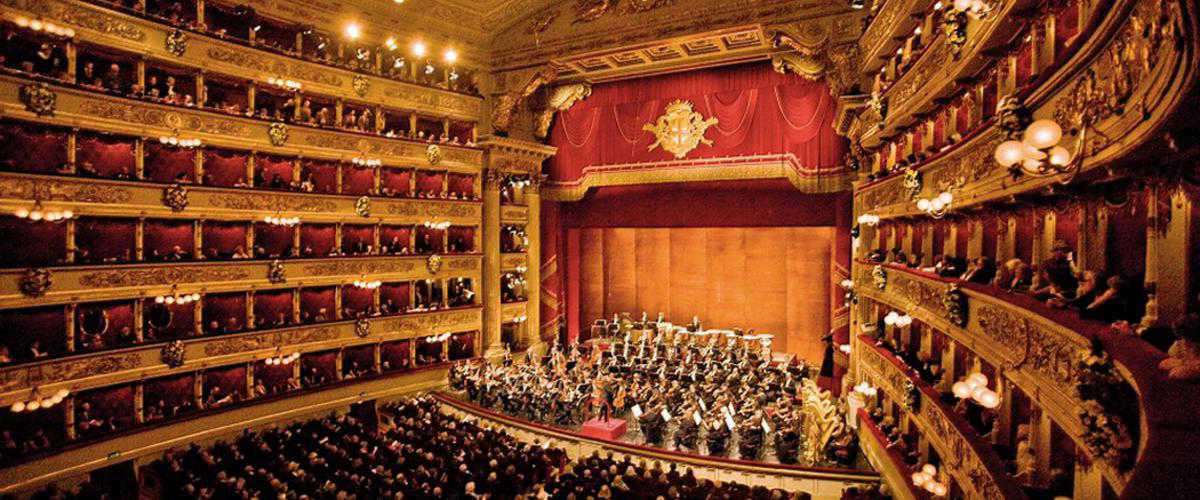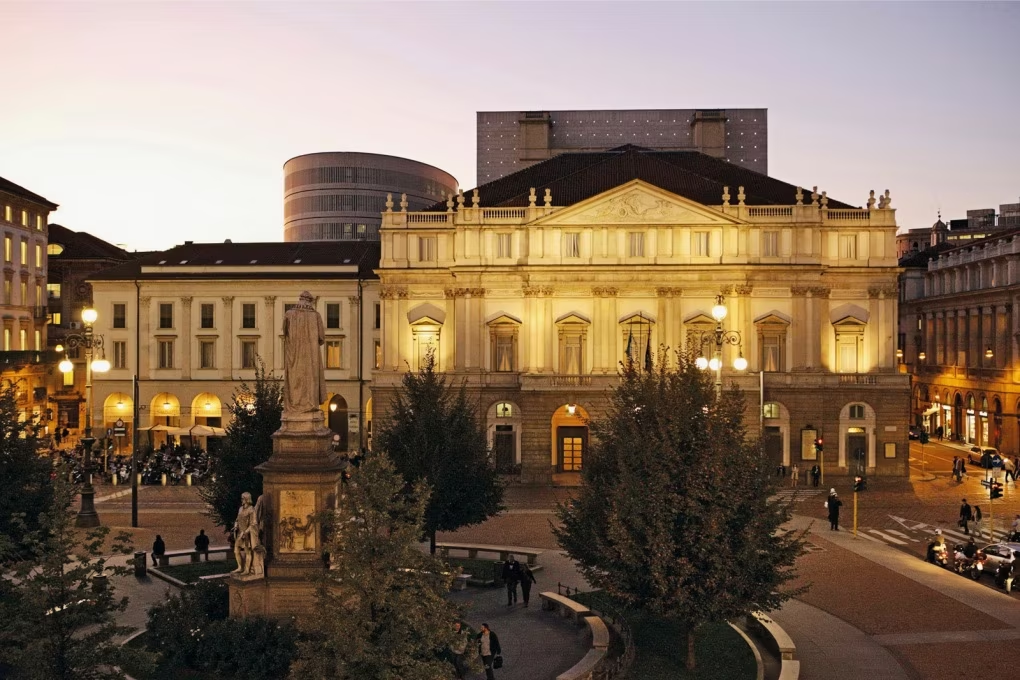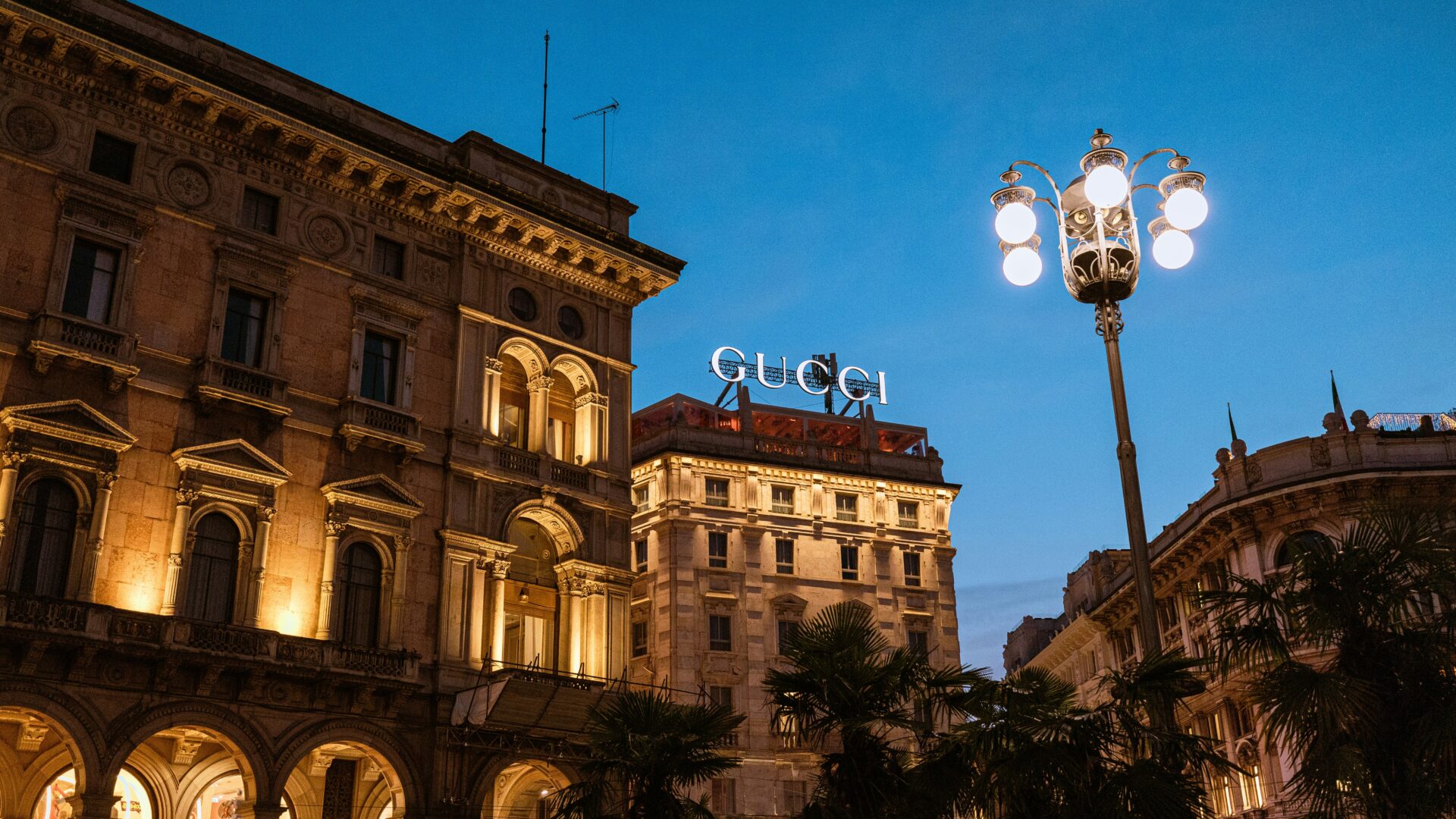When it comes to opera, there’s no place quite like Milan. La Scala Theatre, a gem tucked in the heart of this vibrant city, is one of the world’s most famous opera houses. For opera lovers and culture enthusiasts alike, visiting La Scala is akin to a pilgrimage. As we, Paul and Andrea, the co-founders of Luxo Italia, say, no trip to Milan is complete without experiencing the magic that unfolds here. Let’s dive into everything you need to know about La Scala—its rich history, quirks, upcoming season highlights, and where to stay when you visit.
Milan Italy Opera: The Timeless Charm of La Scala Theatre
La Scala, or Teatro alla Scala, opened its doors on August 3, 1778. It was built on the ashes of the Royal Ducal Theatre, which had been destroyed by fire. The opera house was named after the church that previously stood on the site—Santa Maria alla Scala.
La Scala is more than just a performance venue. It’s a symbol of Milan’s artistic soul. Since its inception, this theatre has witnessed the world premieres of many iconic operas by composers like Verdi, Rossini, and Puccini. In fact, Verdi’s relationship with La Scala was so profound that many of his works were first performed there, cementing the theatre’s status as a creative hub.
What makes La Scala particularly special is its commitment to tradition. From the ornate interiors to the carefully preserved architecture, the theatre remains a living testament to centuries of operatic history. Yet, it isn’t just a relic of the past—it’s a place where culture continues to thrive.
FREE DOWNLOAD
Discover Hidden Luxuries of Italy
Dive into our curated collection of Italy's most luxurious, hidden treasures. Tailored for discerning tastes, explore what others don't know.

Fun Facts and Curiosities About La Scala
One of the things we love most about La Scala is the fascinating history woven into its fabric. Here are some fun facts that may surprise you:
– Chandeliers galore: The majestic chandelier hanging from the theatre’s ceiling has 383 bulbs. This beautiful piece illuminates the opulent hall during every performance.
– Dress code: Did you know La Scala used to have a strict dress code? Up until the late 20th century, men had to wear tuxedos, and women were expected to don elegant gowns. These days, the rules are more relaxed, though dressing up is still highly encouraged.
– A rowdy audience: La Scala is known for having one of the most passionate—and vocal—audiences in the world. In the 19th century, they would often throw objects at performers they didn’t like. Luckily, those days are behind us, and today’s audiences are a bit more forgiving (though still very discerning).
– No balconies: Unlike most other grand theatres, La Scala doesn’t have a balcony area. Instead, it boasts six tiers of boxes, which are incredibly ornate and luxurious. These boxes used to be rented out by wealthy families, making them almost like mini-living rooms for opera-goers.

Highlights from La Scala’s 2024-2025 Season
If you’re planning a visit, you’re in for a treat. La Scala’s upcoming 2024-2025 season is packed with a stellar lineup of performances. Whether you’re an opera newbie or a seasoned aficionado, there’s something for everyone.
– “Rigoletto” by Verdi (opening on December 7, 2024)
Verdi and La Scala have a long-standing connection, and it’s always a thrill when one of his masterpieces takes the stage here. The production promises to be visually stunning, with bold costumes and inventive staging.
– “Il Barbiere di Siviglia” by Rossini (starting February 2025)
A comedic gem, this opera is perfect for anyone who loves a good laugh along with gorgeous music. The energy of this show is infectious, and we’re sure the cast will bring it to life in a spectacular way.
– “Carmen” by Bizet (March 2025)
Few operas are as iconic as *Carmen*. The fiery, passionate story paired with Bizet’s unforgettable score will leave you breathless. This one is a must-see if you’re in Milan during the spring.
These are just a few highlights, but La Scala has an extensive calendar that includes ballet performances, symphonic concerts, and other operatic productions. We highly recommend checking the full schedule before your visit to see what resonates with you.

Best Hotels Near La Scala Theatre for Your Stay in Milan
When you’re in Milan for the opera, choosing the right place to stay can make all the difference. Lucky for you, Milan offers an array of luxury hotels near La Scala that combine comfort, style, and proximity to the theatre. Here are our top picks:
1. **Grand Hotel et de Milan**
If you’re looking for a place rich in history, this is it. Grand Hotel et de Milan is where Giuseppe Verdi lived for years—yes, *the* Verdi. The hotel is a quick stroll from La Scala, making it perfect for those who want to be close to the action. With its old-world charm and modern amenities, it’s a wonderful blend of past and present.
2. **Mandarin Oriental, Milan**
For travelers who prefer a modern touch with their luxury, the Mandarin Oriental offers sleek interiors and top-notch service. The hotel features an incredible spa, perfect for unwinding after a night at the opera. Plus, it’s only a five-minute walk to La Scala, so you won’t have to worry about missing your curtain call.
3. **Hotel Principe di Savoia**
Located a little further from the theatre but still very accessible, Hotel Principe di Savoia is a Milanese institution in its own right. The hotel offers stunning views, plush accommodations, and a traditional Italian experience that makes it a favorite among many opera-goers.
4. **Bulgari Hotel Milan**
For those who appreciate luxury with a minimalist touch, the Bulgari Hotel Milan offers a tranquil oasis in the city center. Its understated elegance is matched by impeccable service, and the hotel’s garden is one of the most peaceful spots in town—perfect for a quiet moment before heading to La Scala.

Planning Your Visit: Tips and Tricks
Now that you know where to stay and what shows to catch, here are a few tips to help make your visit to La Scala smooth and enjoyable:
– Book in advance:cLa Scala is one of the most sought-after cultural experiences in Milan, so it’s essential to book your tickets early. This is especially true for opening nights and popular performances like *Carmen* or *Rigoletto*.
– Dress the part: While the days of mandatory tuxedos are gone, dressing up is still encouraged. It’s part of the fun! Think cocktail dresses for women and suits for men.
– Explore the museum: Before your show, consider visiting the Museo Teatrale alla Scala, located next door to the theatre. It offers a fascinating glimpse into the history of opera and the world of La Scala, complete with costumes, props, and memorabilia from famous performances.
– Dine close by: Milan is known for its incredible cuisine, and several great restaurants are just a stone’s throw from La Scala. We recommend Cracco, a Michelin-starred restaurant with modern Italian dishes.

Other Opera Alternatives in Italy: Beyond La Scala
While La Scala in Milan is arguably the most famous opera house in Italy, the country is home to several other iconic venues that offer rich cultural experiences and world-class performances. Whether you’re a die-hard opera fan or simply curious about Italy’s musical heritage, exploring opera houses across the country is a must. From Venice’s Teatro La Fenice to Rome’s Teatro dell’Opera, each opera house carries its own history, atmosphere, and unique charm. Let’s take a closer look at some of the best opera alternatives to La Scala.
Teatro La Fenice – Venice
Venice, known for its canals and romantic ambiance, is also home to one of Italy’s most prestigious opera houses: **Teatro La Fenice**. Meaning “The Phoenix,” La Fenice has risen from the ashes not once but twice, having been destroyed by fires in 1836 and again in 1996. After its latest reconstruction, it reopened in 2004, and it continues to live up to its name as one of the most resilient and celebrated opera venues in the world.
La Fenice has hosted world premieres of iconic operas such as Verdi’s *La Traviata* and Rossini’s *Tancredi*. Its golden interiors, adorned with frescoes and chandeliers, make for an enchanting setting. What makes La Fenice particularly unique is the juxtaposition of its intimate, historical atmosphere with its modern programming. The theatre often stages contemporary works alongside traditional operas, appealing to a wide range of audiences. If you’re planning to visit Venice, catching an opera at La Fenice is an experience you won’t want to miss.
Teatro dell’Opera di Roma – Rome
Italy’s capital is rich in history, and the **Teatro dell’Opera di Roma** (Rome Opera House) is no exception. Founded in 1880, this grand theatre offers a more stately and traditional opera experience, set against the backdrop of ancient ruins and Renaissance art. The building itself, although smaller than other major opera houses, is striking with its neoclassical façade and opulent interiors.
The Teatro dell’Opera is known for its world-class performances, which include both classic operas and contemporary productions. Famous conductors like Riccardo Muti and directors such as Franco Zeffirelli have worked here, enhancing its reputation as a global opera destination. One of the theater’s most unique features is its summer season, where performances are held outdoors at the Baths of Caracalla, an ancient Roman complex. Watching an opera under the stars, surrounded by centuries-old Roman ruins, is a truly magical experience that combines history, architecture, and music in a way only Rome can offer.
Teatro San Carlo – Naples
Moving further south, we arrive at **Teatro San Carlo** in Naples, which holds the distinction of being the oldest continuously active opera house in the world. Opened in 1737, Teatro San Carlo predates even La Scala and has been a cultural cornerstone in Italy for nearly three centuries. This grand theatre was commissioned by Charles of Bourbon, King of Naples, and its construction was part of his efforts to make Naples a cultural hub in Europe.
San Carlo is renowned for its impressive size and acoustics, which have drawn praise from musicians and audiences alike. The theatre’s red and gold interiors, along with its dazzling chandelier, create a breathtaking setting for performances. Historically, San Carlo has been associated with Italian composers like Rossini and Donizetti, whose works were frequently performed here. Today, the opera house continues to host a variety of performances, from classic operas to ballets and symphonic concerts. If you find yourself in southern Italy, a visit to Teatro San Carlo is a must for anyone interested in opera or historical venues.
Teatro Massimo – Palermo
Located in the heart of Sicily, **Teatro Massimo** in Palermo is another gem in Italy’s operatic crown. As the largest opera house in Italy and the third-largest in Europe, Teatro Massimo is an architectural marvel. Its imposing exterior, inspired by classical Greek temples, makes it one of the most visually striking opera houses in the country. Inside, the theatre boasts excellent acoustics and can seat nearly 1,400 spectators, making it a premier venue for large-scale productions.
Teatro Massimo is perhaps most famous for being the filming location of the final scenes of *The Godfather Part III*, but its cultural significance extends far beyond Hollywood. The opera house was designed in the late 19th century and remains a symbol of Sicily’s rich artistic heritage. Visitors to Teatro Massimo can enjoy an array of performances, including operas, ballets, and concerts. With its dramatic setting and vibrant cultural calendar, Teatro Massimo offers a unique opera experience in the heart of Palermo.
Arena di Verona – Verona
For a truly unforgettable opera experience, head to **Arena di Verona**. This Roman amphitheatre, built in the 1st century AD, is one of the best-preserved ancient arenas in the world and serves as a stunning open-air opera venue during the summer months. Imagine sitting in a historic arena, with the stars above and the ancient walls surrounding you, while listening to the powerful notes of Verdi’s *Aida* or Puccini’s *Tosca*. It’s an experience unlike any other.
The Arena di Verona Opera Festival, which takes place annually, draws opera lovers from around the globe. The atmosphere is electric, with the amphitheatre’s incredible acoustics ensuring that every note resonates throughout the venue. Verona itself is a charming city, known for its Shakespearean connection to *Romeo and Juliet*, but its summer opera festival truly makes it a cultural destination.
FREE DOWNLOAD
Discover Hidden Luxuries of Italy
Dive into our curated collection of Italy's most luxurious, hidden treasures. Tailored for discerning tastes, explore what others don't know.

Final Thoughts: Why La Scala Should Be on Every Opera Lover’s Bucket List
La Scala Theatre isn’t just a place to watch opera—it’s a portal to another world, a world of drama, music, and history. Whether you’re watching an opera for the first time or are a seasoned patron, there’s something about La Scala that stays with you long after the final curtain falls. From its awe-inspiring architecture to the once-in-a-lifetime performances, it’s an experience that will leave you enchanted.
So, if you’re planning a trip to Milan and you’re even remotely curious about opera, do yourself a favor—make a stop at La Scala. And when you do, remember that there’s more to Milan than meets the eye. After all, the city’s beauty doesn’t end with its fashion or food scene. Its soul is in its art, and there’s no better place to feel that than within the hallowed walls of La Scala.
With that, you’ve got a comprehensive guide to one of Milan’s most iconic landmarks. Ready to start planning your trip? Let’s make it unforgettable! Feel free to reach out to us at Luxo Italia if you need any assistance with travel arrangements or additional recommendations—because when it comes to Italy, we’ve got you covered!
